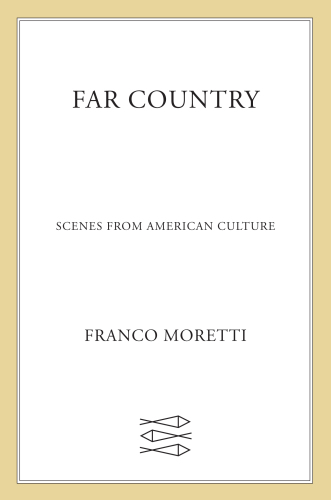
Far Country
Scenes from American Culture
کتاب های مرتبط
- اطلاعات
- نقد و بررسی
- دیدگاه کاربران
نقد و بررسی

January 1, 2019
A literature professor invites us to sit in on some classes.The co-founder of Stanford's Literary Lab and Center for the Study of the Novel, Moretti (Emeritus, Humanities/Stanford Univ.; Distant Reading, 2013, etc.) collects an "odd quintet" of his university lectures on fiction, film, drama, and art and adds another, "Teaching in America," in which he bemoans the university acting like a store seeking "financial dreams," thus betraying "its intellectual purpose." The author clearly wants us to enjoy the "magic" of literature and then "filter it through the skepticism of critique" to acquire an "aesthetic education." He extracts short passages from the works discussed to analyze how language and style create form. In one of the best lectures, Moretti looks at how Hemingway's style in "Big Two-Hearted River"--short sentences, a "spectacular" use of prepositional phrases, repetition--acts as a response to the never-mentioned World War I to create a "sort of retrospective exorcism of an unspeakable trauma." In "Walt Whitman or Charles Baudelaire?" Moretti picks the American when it comes down to the battle "between two incompatible conceptions of modern poetry." Indeed, Whitman provides "the fundamental model for a democratic aesthetics." In the engaging and insightful "Day and Night," Moretti examines the historical and antithetical significance between Westerns and film noir. "Words don't matter in the Western," he writes, whereas film noir is "unimaginable without words." After World War II, these two genres, writes the author, were critical to establishing American cultural hegemony. Next up, "Causality in Death of a Salesman": "American myths, everywhere: and they all turn to ashes." Lastly, and most ambitiously, there's a somewhat hopscotching piece on Vermeer and Hopper/Rembrandt and Warhol. Throughout, Moretti draws on a wide range of authors to assist him in his skeptical critiques.Fortunately, no grades are given out in these classes, just a "genuine intellectual experience" to learn from a first-rate literary critic.
COPYRIGHT(2019) Kirkus Reviews, ALL RIGHTS RESERVED.

February 1, 2019
Moretti (Distant Reading;$SPACE$The Bourgeois) is a leading proponent of literary computational analysis whereby large digital collections of literary texts are mined for historical and sociocultural meaning. This methodology is best exemplified by two of the six essays in this latest work. For example, "Walt Whitman or Charles Baudelaire?" examines sentence structure, repetition, modifiers, and the relation of adjectives to their nouns as seen in Whitman's Leaves of Grass (1855) and Baudelaire's Les Fleurs du Mal (1857). Moretti contends that Whitman's free verse reflects the unbounded, industrious, and democratic spirit that hallmarked 19th-century America, while Baudelaire's poetry mirrors the disjunctive, chaotic metropolis that was Paris. And in "Prose and History in Big Two-Hearted River, ' " Ernest Hemingway's simple, terse, and repetitive sentence structure epitomizes the soldier-character's inability to give voice to the brutal experience of war. Other pieces include a comparison of space, light, and the idea of legitimate violence in the Western and film noir genres, as well as the use of active and passive subjects in private and public space as demonstrated in the art of Vermeer and Edward Hopper. VERDICT For collections where Moretti's other titles are popular and academic holdings.--Lonnie Weatherby, McGill Univ. Lib., Montreal
Copyright 2019 Library Journal, LLC Used with permission.

February 1, 2019
Danily C. and Laura Louise Bell Professorship in the Humanities, Emeritus, at Stanford University and a National Book Critics Circle Award winner for Distant Reading, Moretti produces cutting-edge criticism by setting Whitman next to Baudelaire, the Western next to film noir, and Rembrandt next to Warhol--unexpected pairings that illuminate even if they might jar. He thereby shows us how new art forms continually emerge--and, by extension, how American cultural dominance has shaped the world.
Copyright 2018 Library Journal, LLC Used with permission.

























دیدگاه کاربران